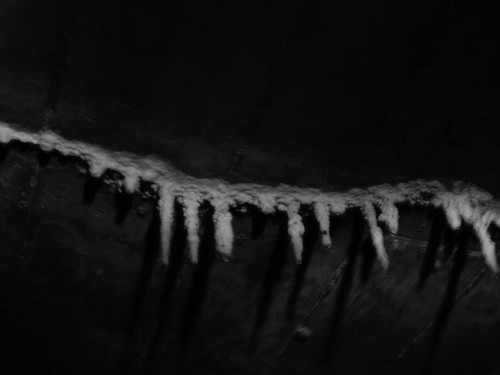First Drain
Note: This is stuff I did in June. Pardon the shifted tense, I hope explained consistency will make things less, not more confusing.
At home I used to go out walking or biking, and would frequently wind up exploring one little stream or another. As a farming area, pretty much the only terrain features were these ditches. I began to explore a small ditch here that runs through campus. This ditch is one of the environmental-reclamation projects the city is pushing to avoid erosion, runoff, habitat loss, water pollution, deforestation, and cancer. It winds through the long dimension of campus, hardly drawing any notice at all to itself.
The stream's stealthiness is helped by the fact that it's only visible far away from the busy sidewalks. It's either shrouded by trees and ten feet or more below sidewalk level, or literally underground and out of sight. Today I was hiking along the sunny creek bed near the track when I came upon what looked a lot like a dead end. A concrete apron juts out, with a bridge and log spanning the stream above it. Atop the bank and ahead of me lay a road I know well, but the stream I walked along seemed to appear from the ivy.

Clicking this picture will open a larger version. The photos in this entry are from my old camera. Of course streams can't dead end. It seems obvious when you think about it, but even as I started right at it it didn't really sink in. All streams come from somewhere, and all water has a path downhill. I keep a small pen-light with me (Thanks Uncle Brad!), so I walk on in to check it out. The stream went right under a road and lot in a long culvert. Picture a concrete room, 8 feet wide and high; stretched out to a few hundred feet long, and then the short walls left off. A box culvert is made of two or three of these buried under a road or something heavy, to let a stream go through and support the road without building a real bridge. All of the paths in a culvert will travel together, carrying the stream. Out of sight and out of mind, the water continues along, flowing and dripping in darkness. The water is only deep enough to get the soles of my shoes wet, occasionally getting up to an inch deep, and there's a small side tunnel for later...

In the middle the afternoon on a busy campus, in summer, I managed to find a quiet dark world that few people see. I'll soon add the pictures of graffiti in this tunnel.





